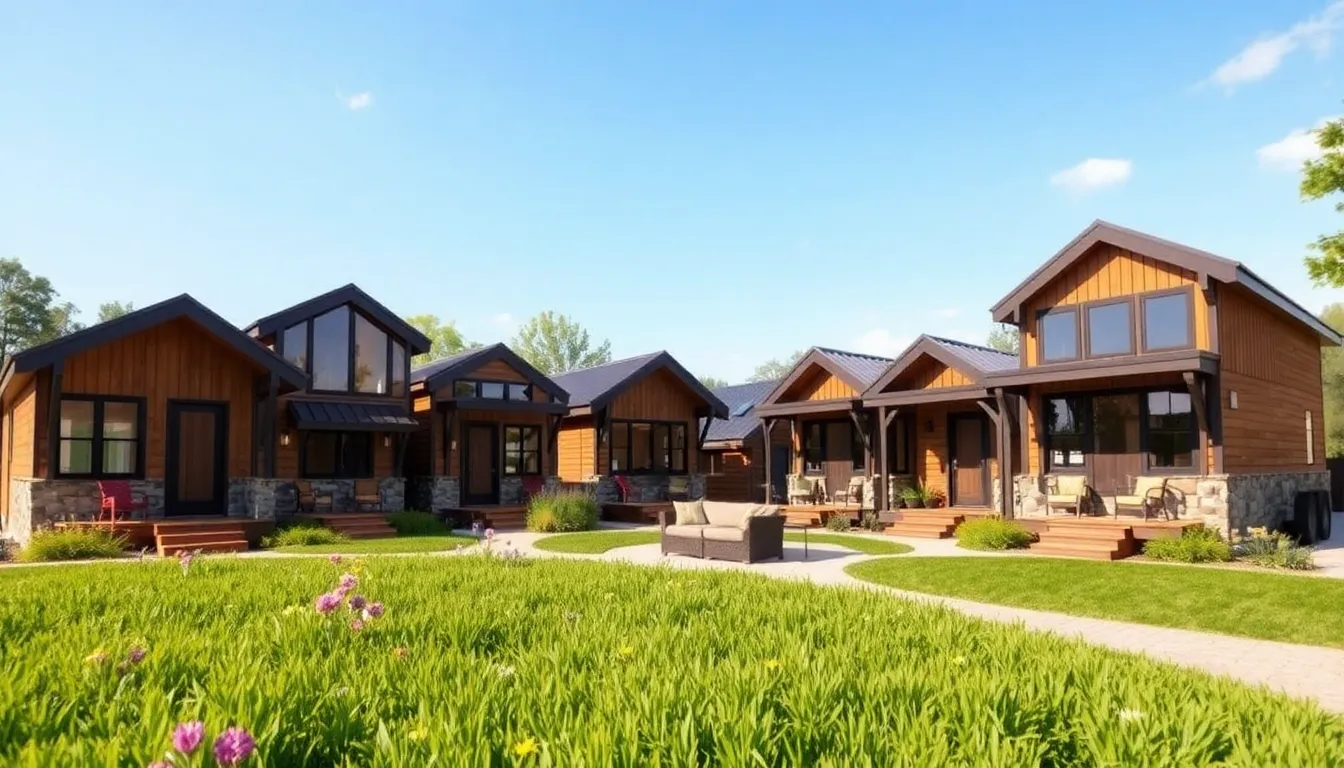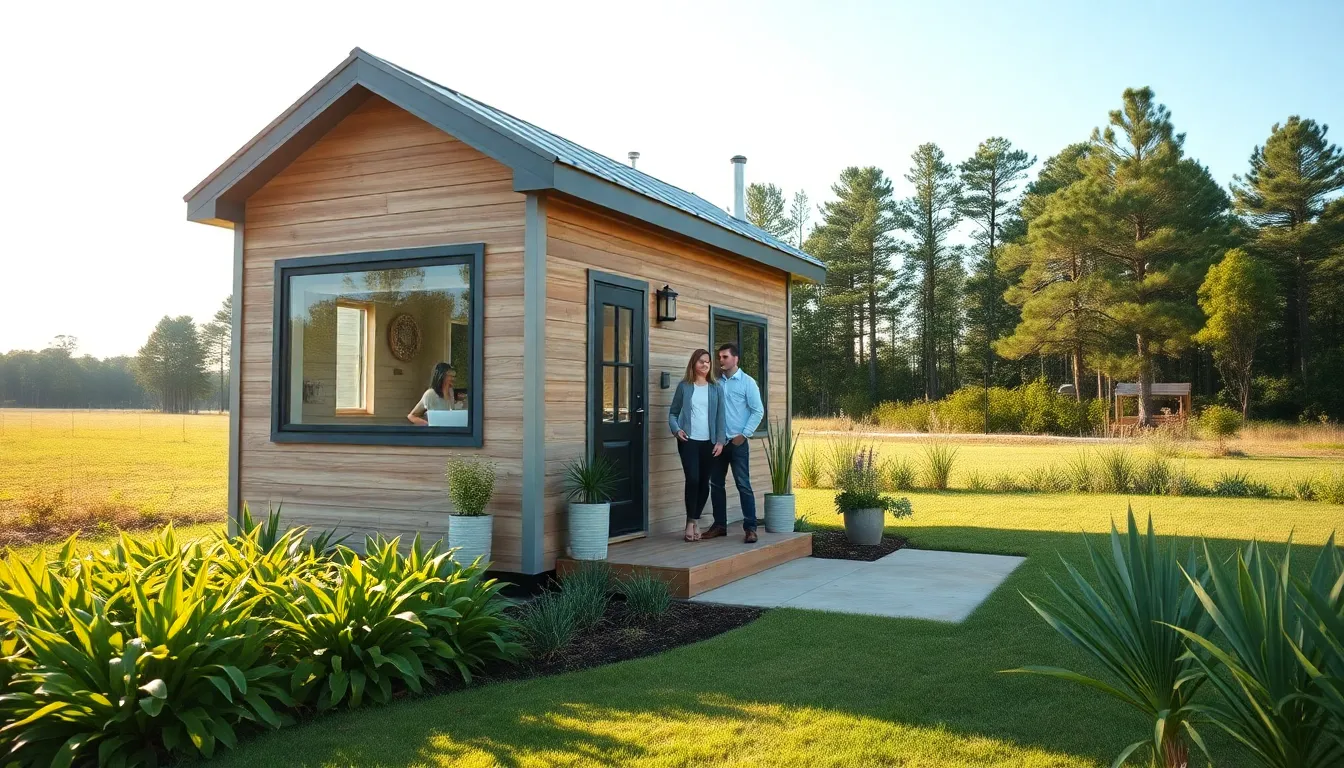Imagine walking into a space where the aroma of diverse cuisines dances in the air, and laughter fills the room like a well-timed punchline. Shared dining spaces are the culinary playgrounds where food lovers unite, breaking bread and barriers alike. They’re not just about sharing a meal; they’re about sharing experiences, stories, and maybe even a few awkward silences over that one friend’s questionable taste in food.
These communal tables invite everyone to join the feast, fostering connections that even the most introverted foodie can’t resist. With every bite, diners embark on a delicious journey, discovering new flavors and forging friendships that might just last longer than the leftovers. So why settle for a lonely dinner when you can dive into a vibrant atmosphere that’s as much about the people as it is about the plates?
Table of Contents
ToggleOverview of Shared Dining Spaces
Shared dining spaces represent a unique approach to enjoying meals in a communal environment. Known for fostering connections, these settings allow individuals to share diverse cuisines in an inviting atmosphere. Friends and strangers alike gather around communal tables, encouraging exchanges between people from different backgrounds.
These spaces often feature an eclectic mix of food options, appealing to various tastes. Patrons can savor dishes from multiple culinary traditions, making each meal an exciting exploration of flavors. Sharing plates amplifies the dining experience, with guests sampling different items and discussing their preferences.
Accessibility plays a crucial role in the popularity of shared dining. Often located in urban areas, these spaces attract a variety of patrons, from busy professionals to families looking for a casual dining option. The relaxed environment enhances social interaction, with many guests enjoying the thrill of making new acquaintances over meals.
Shared dining contributes to a sense of community, allowing individuals to bond over their love of food. Additionally, many establishments host themed events, providing ample opportunities for culinary discovery. Regularly rotating menus and guest chefs keep the experience fresh, enticing diners to return and explore more.
Adaptability defines shared dining spaces, as many establishments cater to different occasions. Whether it’s a casual dinner or a celebration, these venues create an atmosphere conducive to conversation and connection. By inviting guests into a shared culinary adventure, these spaces transcend traditional dining and promote a culture of togetherness.
Benefits of Shared Dining Spaces
Shared dining spaces foster a sense of community, provide cost-effective dining options, and create enjoyable culinary experiences. These spaces enrich social interactions while appealing to diverse tastes.
Community Building
Shared dining spaces encourage relationships among individuals. Groups of strangers often bond over communal tables, leading to new friendships. Events like themed dinners create shared experiences, enhancing connections. Interaction prevails as people engage with one another, discussing food, culture, and ideas. Communities form where different backgrounds mingle, uniting food lovers. The environment promotes inclusion and collaboration, essential elements for strengthening social ties.
Cost Efficiency
Cost efficiency stands out as a significant benefit of shared dining spaces. Patrons access a variety of cuisines at lower prices than traditional dining options. Diverse food options enable guests to sample multiple dishes without overspending. Group dining encourages sharing plates, spreading costs among friends. Economies of scale come into play, as establishments often reduce overhead by accommodating larger groups. Many venues offer promotions and discounts for communal dining, making it an attractive option for budget-conscious diners.
Design Considerations for Shared Dining Spaces
Designing shared dining spaces requires careful planning to enhance the overall dining experience. Focused layouts maximize interaction and comfort among patrons.
Space Layout
An open layout encourages circulation and social interaction. Arrange communal tables to create a natural flow, allowing movement without obstruction. Multiple zones can cater to different dining preferences, from large gatherings to intimate conversations. Incorporating flexible seating options also helps accommodate varying group sizes. Consider integrating semi-private spaces, where smaller groups can enjoy meals while still feeling part of the larger environment.
Ambiance and Decor
Ambiance significantly impacts the dining experience. Lighting choices, such as soft pendant lights or warm fluorescents, create a welcoming atmosphere. Incorporate artwork that reflects the local culture or the cuisine’s heritage to foster a sense of connection. Colors play a crucial role; warm tones can stimulate appetite while cool hues promote a relaxed vibe. Thoughtful decor choices enhance the communal spirit, inviting guests to linger and engage with each other over their meals.
Popular Trends in Shared Dining Spaces
Nutritious food choices attract health-conscious diners, leading to the rise of plant-based menus in shared dining spaces. These venues now offer a variety of vegetarian and vegan options, appealing to a broader audience. Emphasis on local and seasonal ingredients enhances flavors and supports sustainable farming practices.
Food halls continue to gain popularity, featuring multiple vendors under one roof. This setup allows patrons to sample diverse dishes without committing to a single cuisine. Experiential dining events create unique opportunities for culinary exploration, such as cooking classes or interactive chef presentations.
Community involvement often shapes the character of shared dining spaces. Local artists display their work, while live music or entertainment adds vibrancy to the atmosphere. Various themed nights engage diners, creating memorable experiences centered around culture and cuisine.
Social media influences design choices, prompting establishments to create visually appealing spaces. Unique decor, striking murals, and carefully curated aesthetics encourage guests to share their experiences online. Instagrammable setups attract younger audiences, enhancing foot traffic and customer engagement.
Sustainability initiatives resonate with many diners, prompting shared dining spaces to adopt eco-friendly practices. These efforts include using biodegradable utensils, reducing food waste, and sourcing organic ingredients. Such initiatives reflect patrons’ growing preference for environmentally conscious dining.
Technology integration enhances the shared dining experience. Digital menus, online reservations, and contactless payment options streamline service, making dining more efficient. Enhanced connectivity also allows guests to share feedback instantly, promoting a customer-centric environment.
Challenges Facing Shared Dining Spaces
Noise levels in shared dining spaces can create discomfort for patrons. High traffic and communal seating often lead to a lively atmosphere, which may overwhelm conversations. Striking a balance between a vibrant environment and manageable sound levels presents a challenge for many venues.
Accessibility issues must also be addressed. Inadequate seating arrangements can limit comfort for individuals with disabilities or larger groups. Designers need to incorporate flexible layouts that cater to diverse needs and preferences.
Hygiene concerns arise in communal settings. Shared plates and utensils may heighten anxieties around cleanliness, especially in a post-pandemic world. Restaurants need to implement strict sanitation protocols to reassure customers about food safety.
Food diversity can lead to complexity. Although catering to various tastes is appealing, accommodating dietary restrictions requires careful menu planning. Managing allergens and preferences demands attention to detail from chefs and staff.
Staffing challenges impact service quality. High turnover rates in the restaurant industry can affect consistency and customer satisfaction. Training programs need to prioritize effective communication and teamwork to enhance overall dining experiences.
Competition among venues can drive prices down. The rise of food halls and market-style dining introduces challenges for traditional restaurants. Adapting pricing strategies while maintaining food quality becomes essential for attracting patrons.
Cultural differences among diners can complicate interactions. Guests may have varying expectations about sharing meals and dining etiquette. Staff must facilitate understanding to create an inclusive and welcoming atmosphere for everyone.
Conclusion
Shared dining spaces represent a dynamic shift in how people experience food and connection. They cultivate a sense of community while offering diverse culinary options that cater to various tastes. The vibrant atmosphere encourages interaction among guests, making each meal an opportunity for new friendships and memorable experiences.
As these spaces continue to evolve, they address challenges while enhancing their appeal through thoughtful design and innovative concepts. The future of dining lies in these communal environments where food lovers unite, celebrate diversity, and enjoy the simple pleasure of sharing a meal. Embracing this trend not only enriches individual experiences but also strengthens community bonds.







